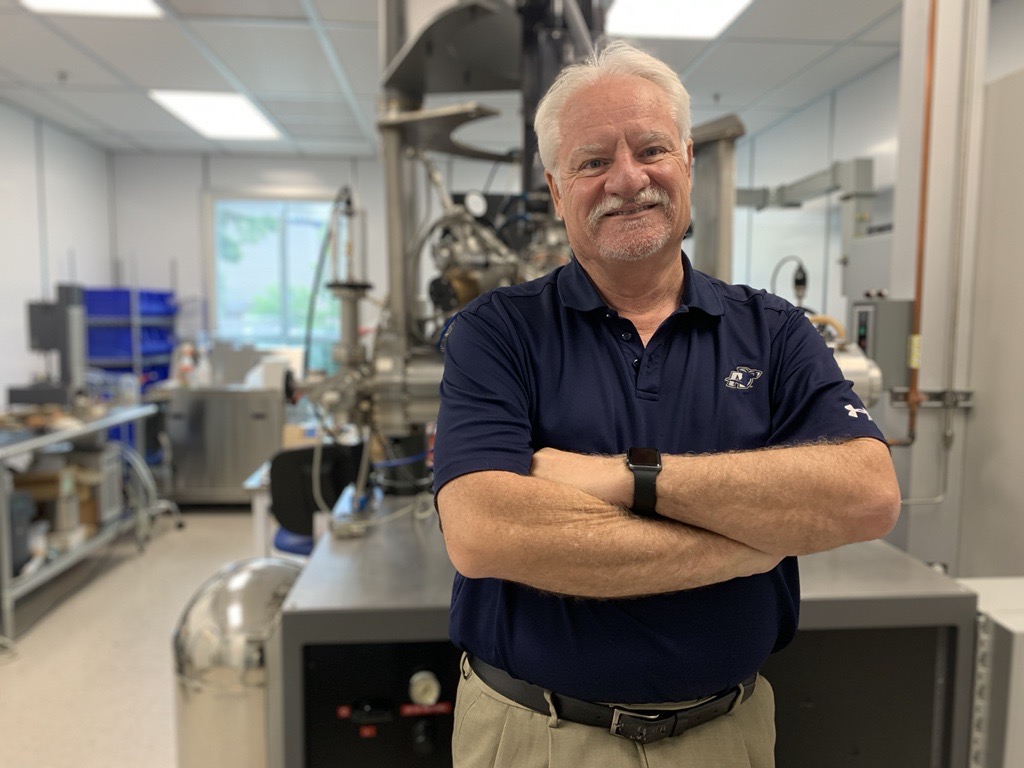
Gary Doll, Ph.D., is the Director of the Timken Engineering Surface Laboratory at The University of Akron. He is also a surface engineer and professor. Before coming to UA, he was the Chief Technologist of Tribology & Advanced Materials at The Timken Company. He also worked as a scientist at General Motors Research Laboratories. Dr. Doll received his doctorate in physics from The University of Kentucky and completed his post-doctorate work at MIT.
1. You recently received an award from the Society of Tribologists and Lubrication Engineers for a published research paper. First of all, tell us what tribology and lubrication engineering is.
Tribology is the science of studying the interaction of surfaces in relative motion. It includes the concepts of friction and wear. Sometimes we want to maximize friction such as on the soles of our shoes, and in others we want to minimize friction like the rails of a sled.
Lubrication engineering relates to the use of certain substances to minimize friction and wear. Lubricants are found most everywhere. Oils and greases are required for our cars to run, and lubricants are found in nature, like a snail’s slime that aids in movement.
2. Tell us about the research you were recently recognized for.
The manuscript that received the award was the result of a collaboration between UA, Argonne National Laboratory and The University of Delaware. We studied how wind turbine dynamics affect the forces experienced by rolling bearings typically used in the gear boxes. We basically used fundamental principles of mechanical engineering to evaluate the forces at play in large wind turbine gearboxes and discovered the real reason why bearings at a particular position in the gearbox have failed.
This research was made possible by a grant from The United States Department of Energy.
3. What did you learn?
Let me provide some background. Wind energy (or wind power) refers to the process of creating electricity using the wind or air currents that occur naturally in the earth’s atmosphere. Wind turbines are used to capture kinetic energy from the wind and generate electricity. The blades of the turbine are rotated by the wind, and this rotation turns the main shaft that is connected to a gearbox. Rolling bearings are used to support a number of the gears within the gearbox allowing them to rotate with minimal friction.
Large-scale bearings used in these turbines should last for centuries, but many suffer premature failures. What our paper revealed was for these large-scale rolling bearings to operate well, they must support a large load. Our research discovered that the bearings were underloaded between 40-70% of the time. When the forces on the bearings are not strong enough, the rollers slide instead of rolling. This sliding motion results in an increase in friction and wear. Eventually, the wear becomes so large that the bearing can no longer support the loads applied by the gears, the bearings cease to rotate, and the gearbox has to be repaired. Since the gearboxes are located about 80 meters in the air, it is very expensive to remove or replace them.
4. Do you have an analogy to help me understand your work?
In underloading conditions, the rolling elements lose traction and start to slide. This may be analogous to the occurrence of hydroplaning in automobiles when the tires lose traction on the road.
5. Why is your area of scientific discovery important (or relevant) for the average person?
Energy from wind is an important component in the world’s efforts to supplant climate damaging fossil fuels with clean and renewable energy. Improving the reliability of these giant wind turbines reduces the kilowatt-hour cost of the electricity needed for our daily lives. By properly designing the rolling bearings to minimize or eliminate underloading, wind turbines will stay operational longer.
6. What is your favorite aspect of your research?
I am extremely proud of the successes of our graduate and undergraduate students that have passed through my laboratories.
7. How did you end up here?
After spending 21 years in industrial research laboratories, I joined the College of Engineering and Polymer Science (back then, the College of Engineering) at UA as the result of a novel “open innovation” agreement entered into between UA and the Timken Company. This agreement was championed at UA by Professor Ajay Mahajan. An endowed chair was created in the College in something called surface engineering. Since I was one of the leading scientists in that field, I was offered the chair position.
8. What would you be doing if you weren’t a surface engineer?
Something with music. I started as a music major in college, but realized that I was not talented enough, so I went the engineer route.
9. What do you do as Director of the Timken Engineered Surfaces Laboratory (TESL)?
I pursue and receive funding from public and private organizations to conduct research in tribology, lubricants, and corrosion. Once funded, I enlist the services of TESL staff and students and UA faculty to perform the required research.
10. What's next?
I am writing a reference book on rolling bearing tribology, which should be finished in December. We are also doing some exciting things at TESL, including conducting research in the tribological implications of water in lubricants. Oil and grease lubricants almost always contain a certain amount of water. Generally speaking, the more water in a lubricant, the worse it performs. We are looking into measuring the impact varying amounts of water new and aged oils have on friction.
Related content:
- Learn more about UA's mechanical engineering program
